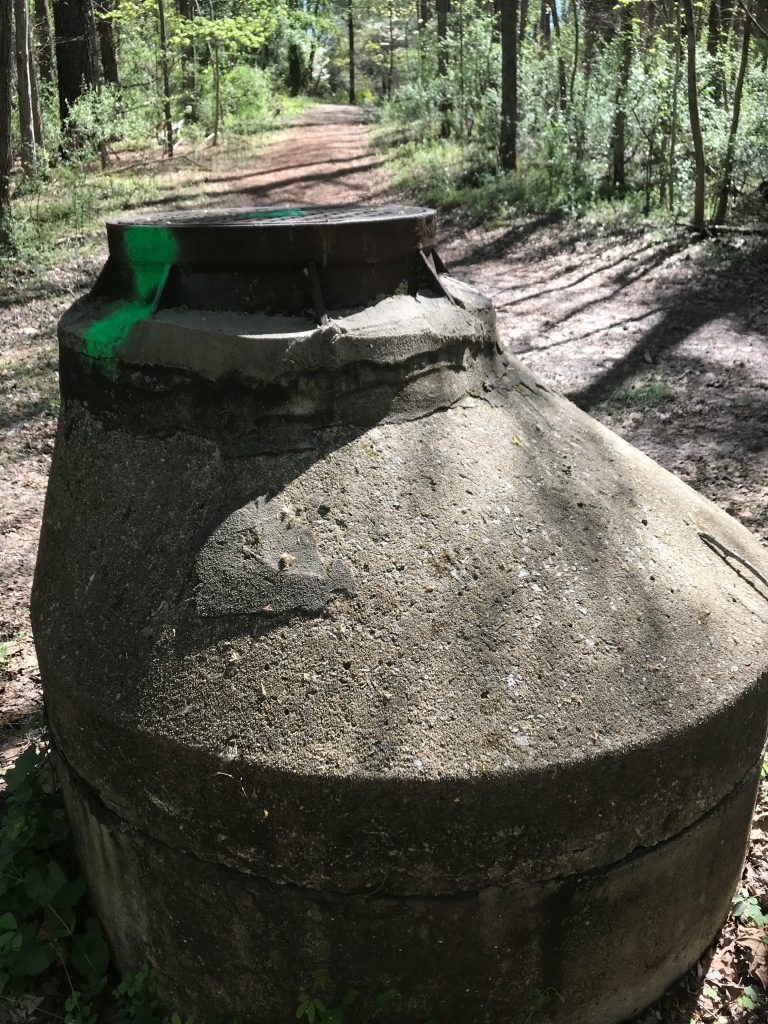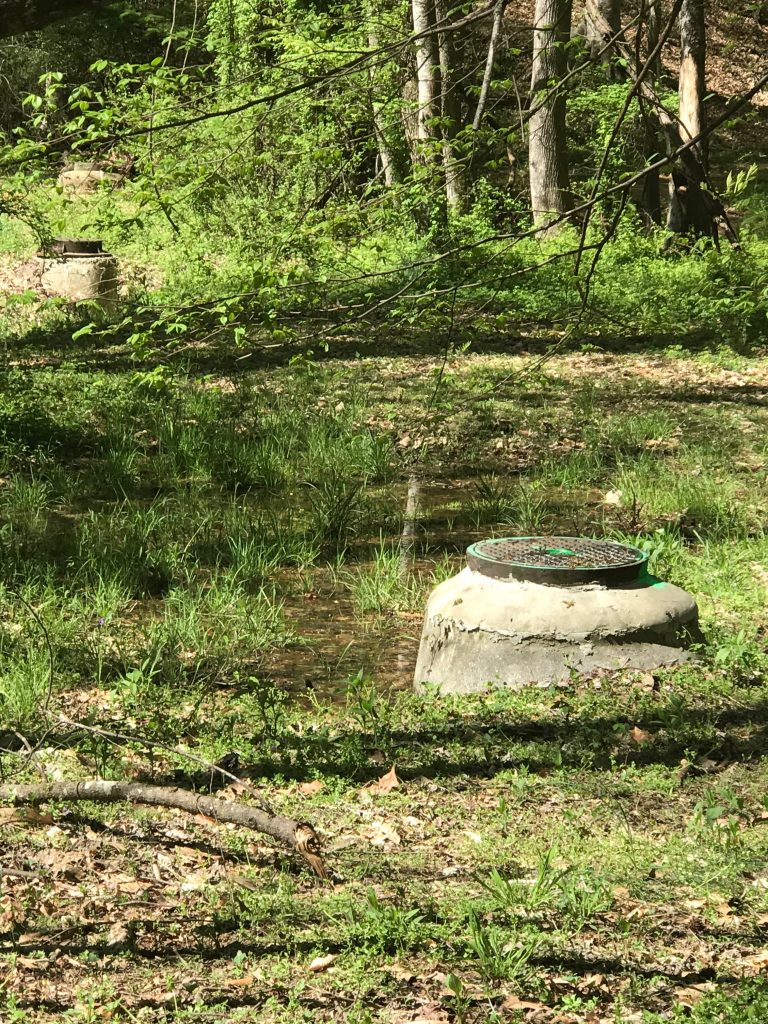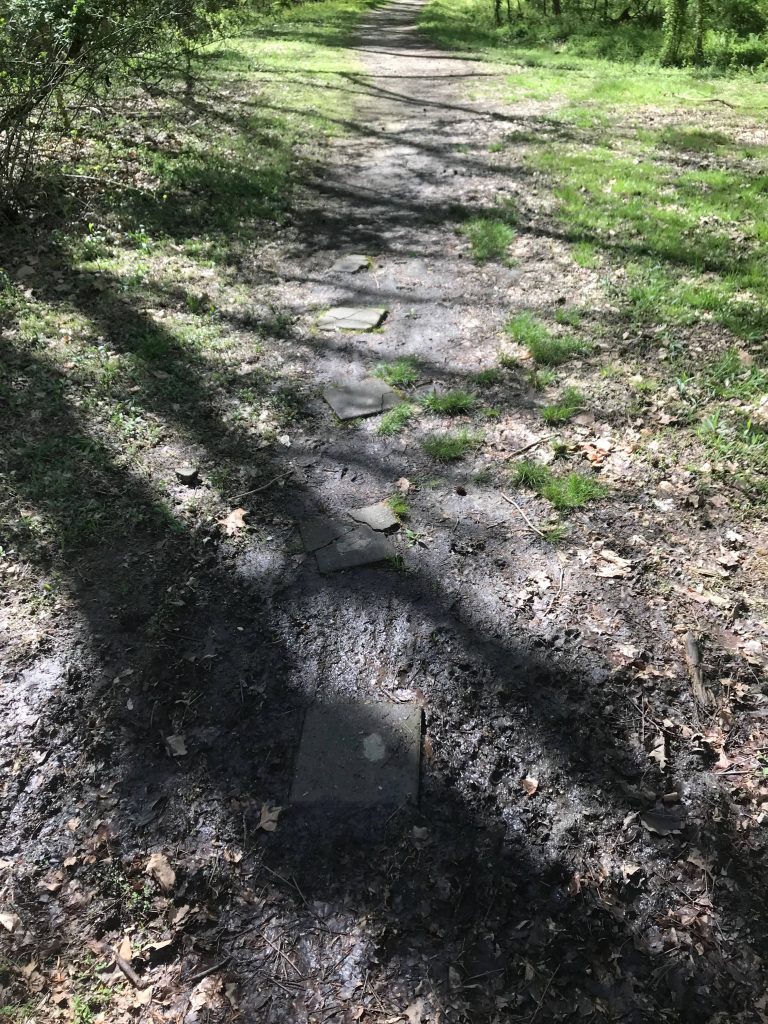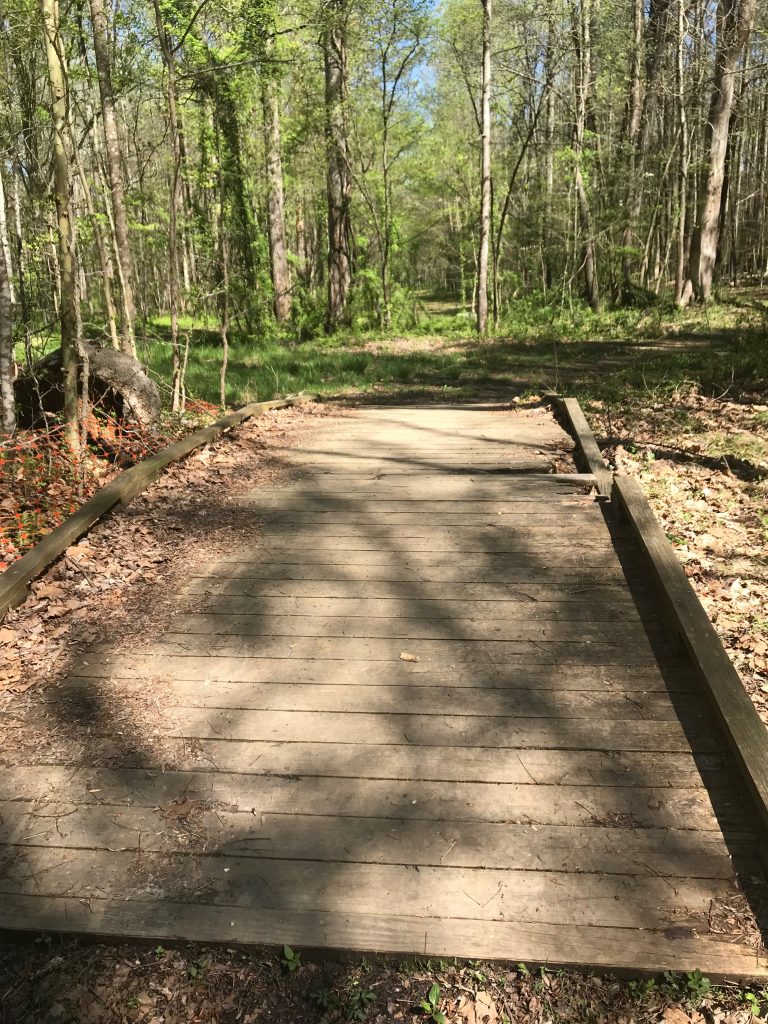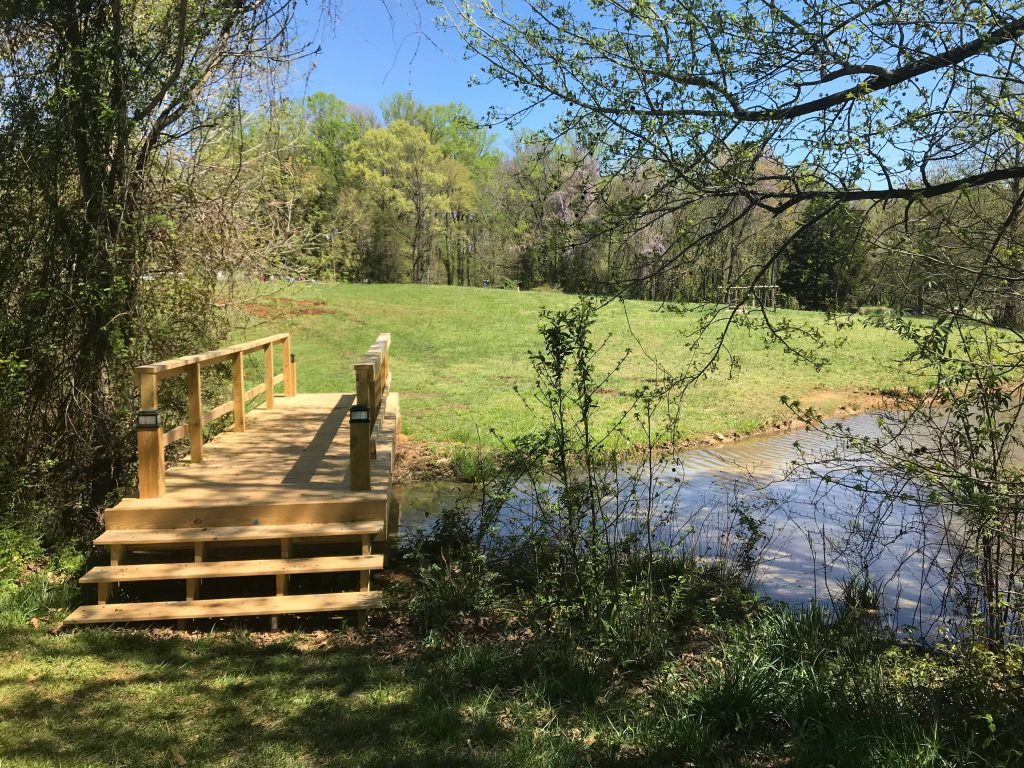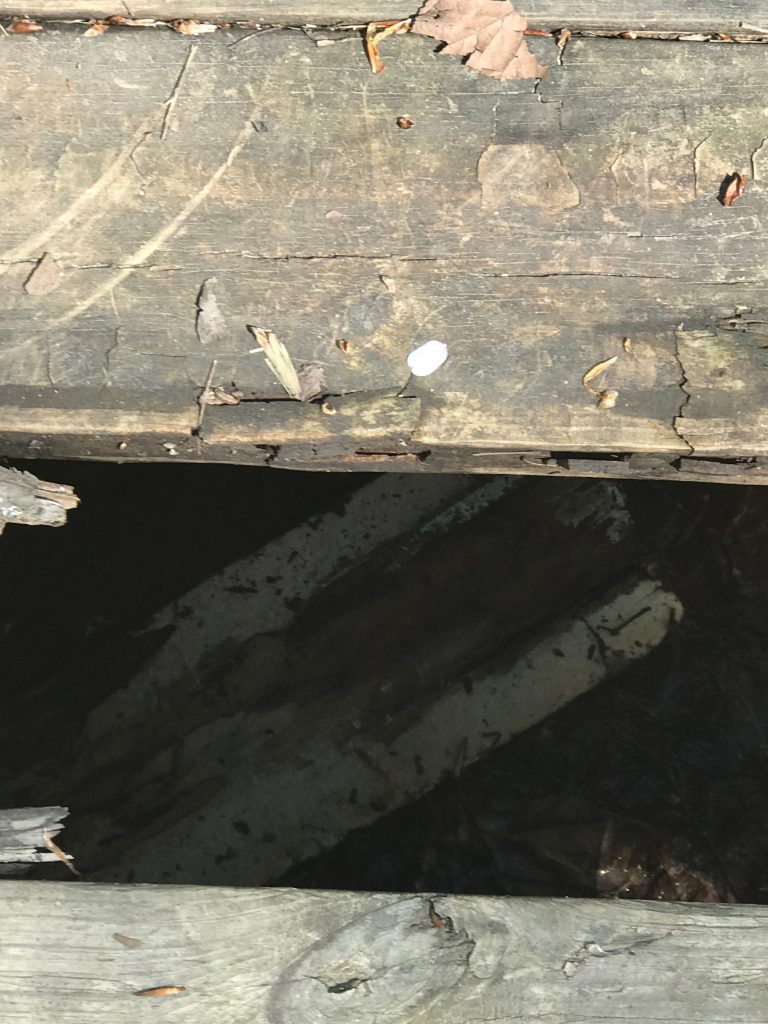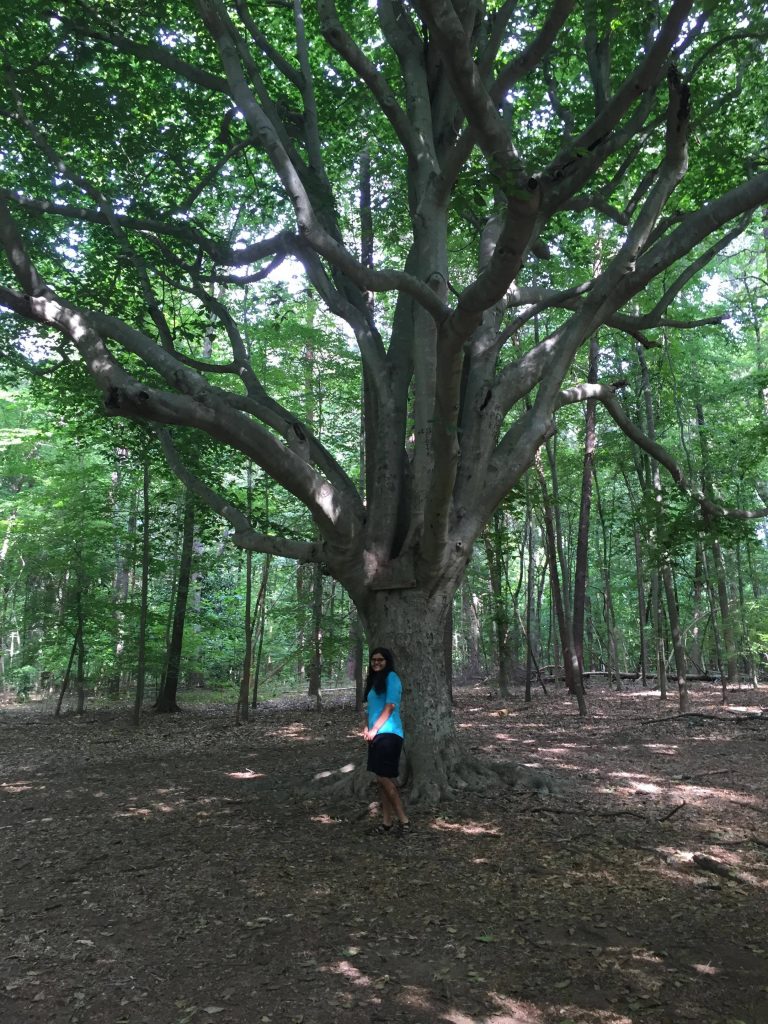Author: Ramya Krishna
Winter Walk In The Guilford Woods
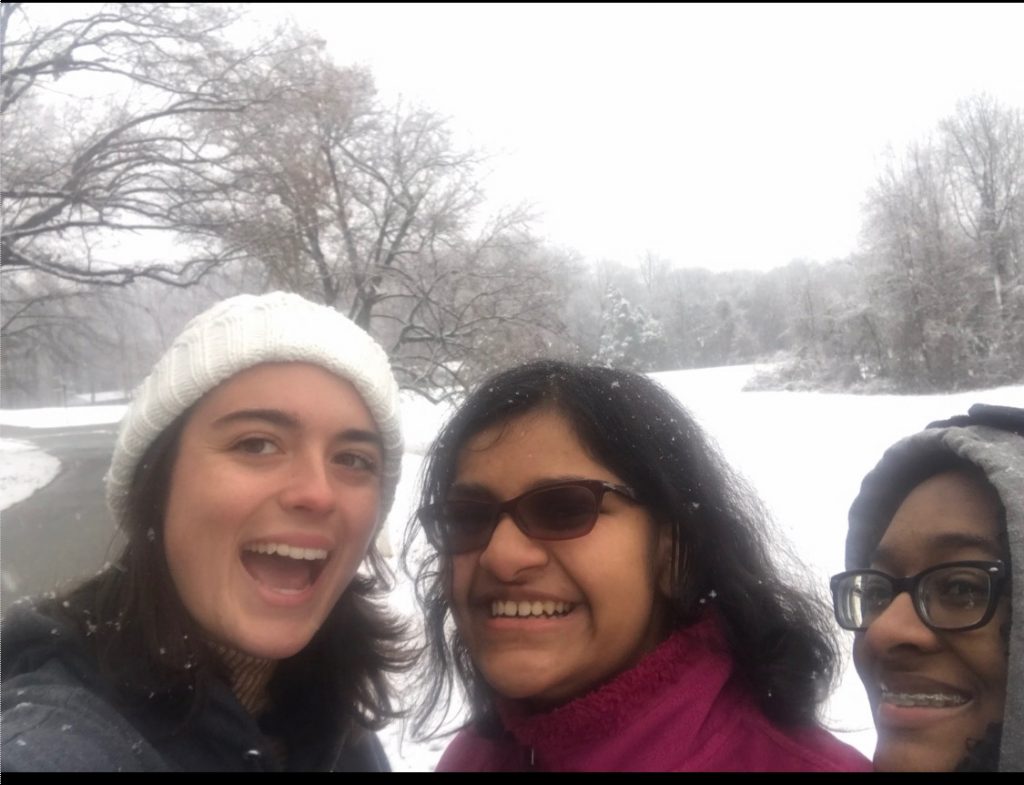
On a snowy December 9th, 2017 my friends Natalie, Momo, and I set off into the white wilderness to get some great pictures, which we coined “Snow-to Shoot.” Setting off together made us forget that the recent “Snowpocalypse” (the term for a particularly snow-filled North Carolina winter) had made our bustling campus a ghost town, with people rushing to go inside rather than sitting around outside, and guardedly walking around the deadly frozen walkways. We laughed and chatted along the way, but all hell broke loose when we got to the pristine snow. It was simply too good an opportunity to resist.
Suddenly I found myself with a face full of snow. In lieu of snowballs, Momo had taken to dumping handfuls of snow on us. At this point, luckily, the snow was still very powdery and at least 2-3 inches around us. Retaliation was inevitable, swift, and snowy, and soon we were all shivering with delight. We trudged up to the Lake, which is where we ran into the Muscovy Ducks (see the post Lackin’ Quackin’ for more details). The Lake had not frozen over, but the only other waterfowl I could see on the water was a Canada Goose. The plants near the bank were sparsely covered with snow, though much more so further into the lawn. Underneath, the leaves and stalks that hadn’t turned brown were green, and perhaps it is because the packed snow provided adequate insulation.
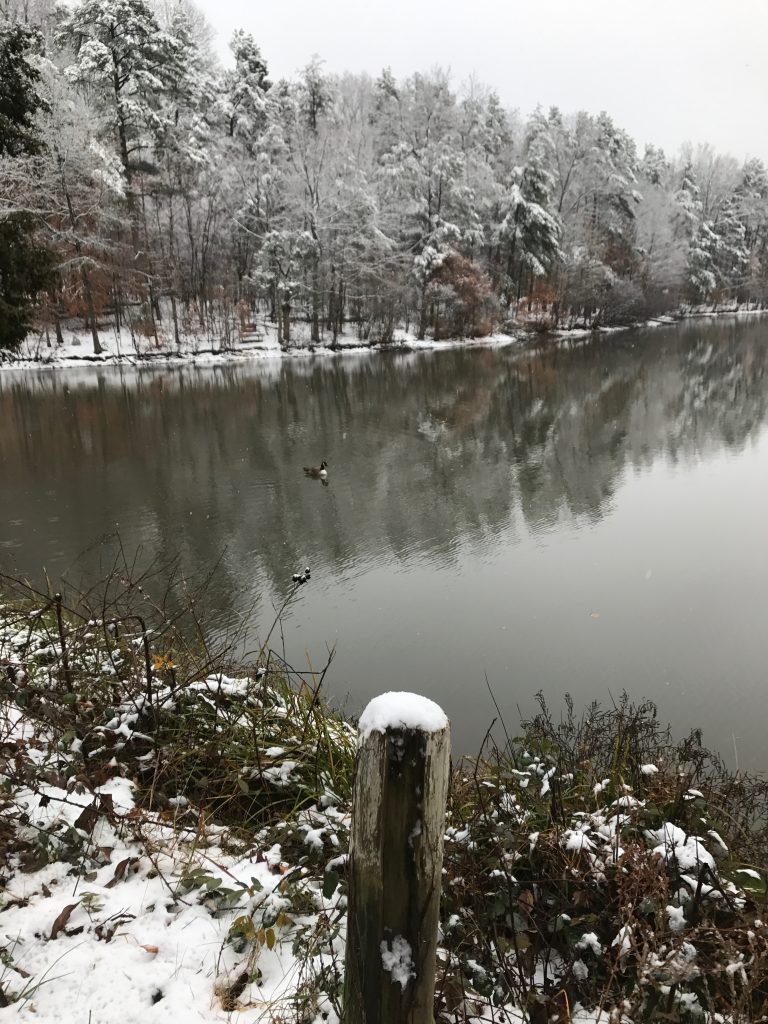
Through seeing the Guilford College Woods in the winter from this vantage point, I had the opportunity to appreciate just how many trees had kept their greenery by virtue of either their status as evergreens or tolerance of cold temperatures. It was interesting comparing the ground cover near the Guilford College Lake, versus in the Woods. Given that the ground in the Woods is mostly dirt on the trails, the area was very muddy where tracks could be seen. Deeper in the woods, most of the trees were leafless by now, and the shrubs and trees seemed to be entangled in each other.
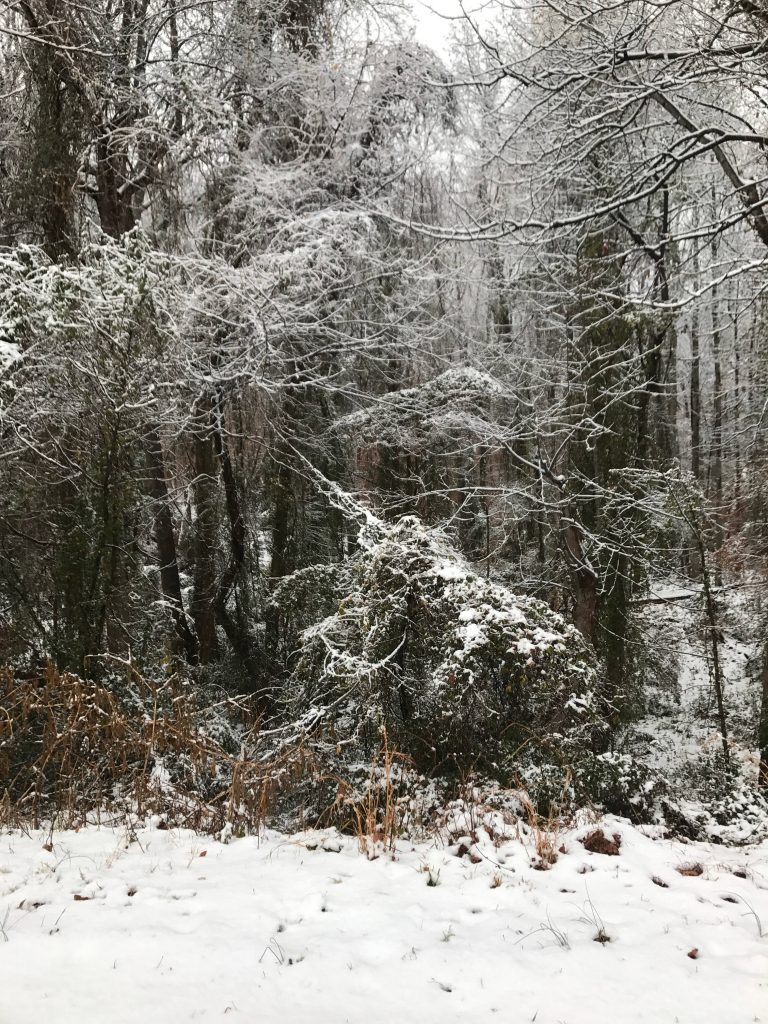
Below was one of the many bridges we had found and taken pictures on. This particular part of the woods was full of American Beech trees, which have fascinating leaves.
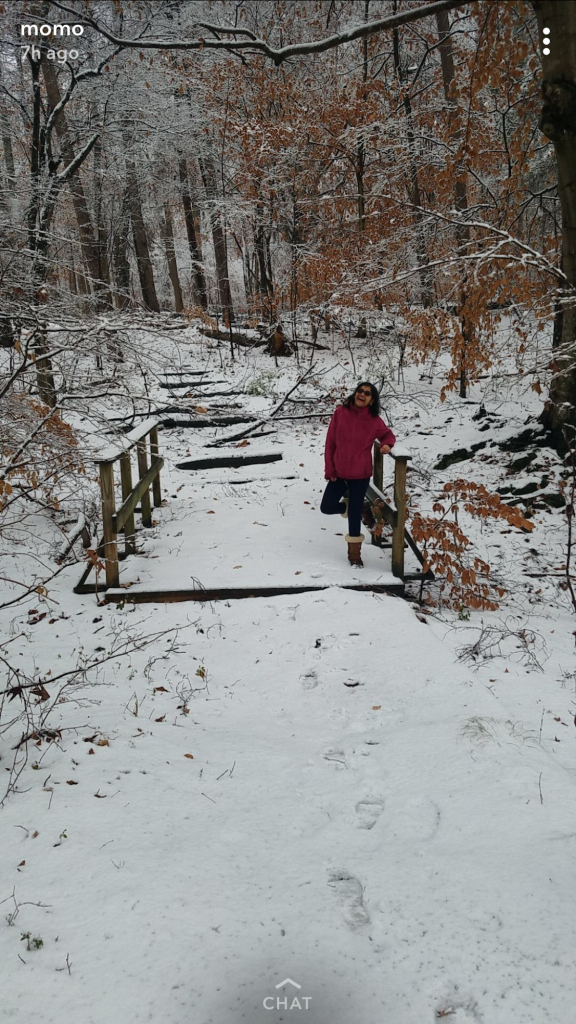
As you can see in both the picture above, and probably much more clearly in the picture below, the leaves have jagged edges, and it’s winter twigs are particularly unique because they’re long, thin, and have rows of leaves on either side.
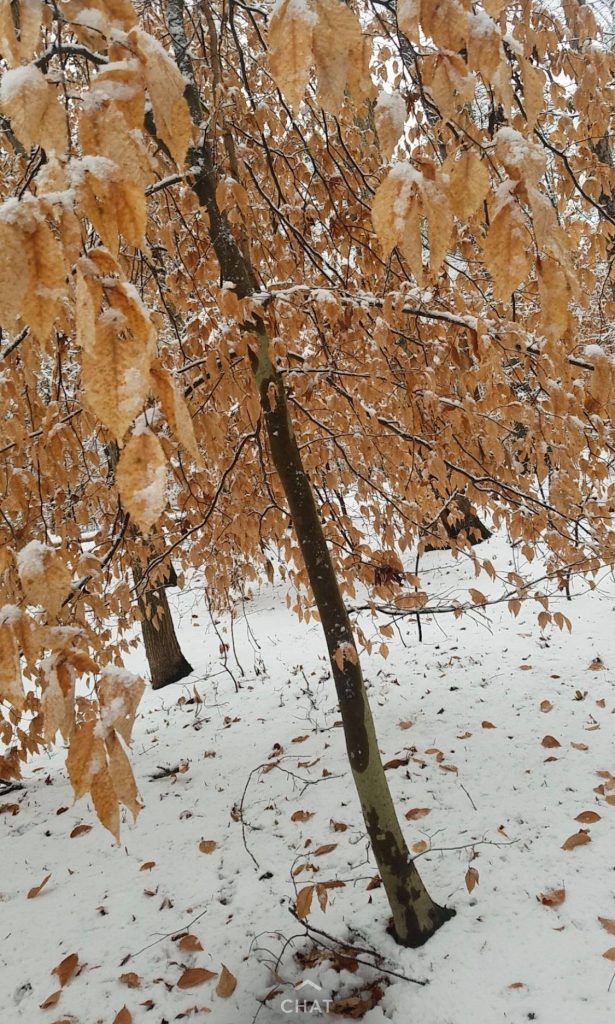
In winding back down that open road, in the rendered ghost town of Guilford College, we were able to reflect how we transformed nature into our winter wonderland, just by delving wholeheartedly in.
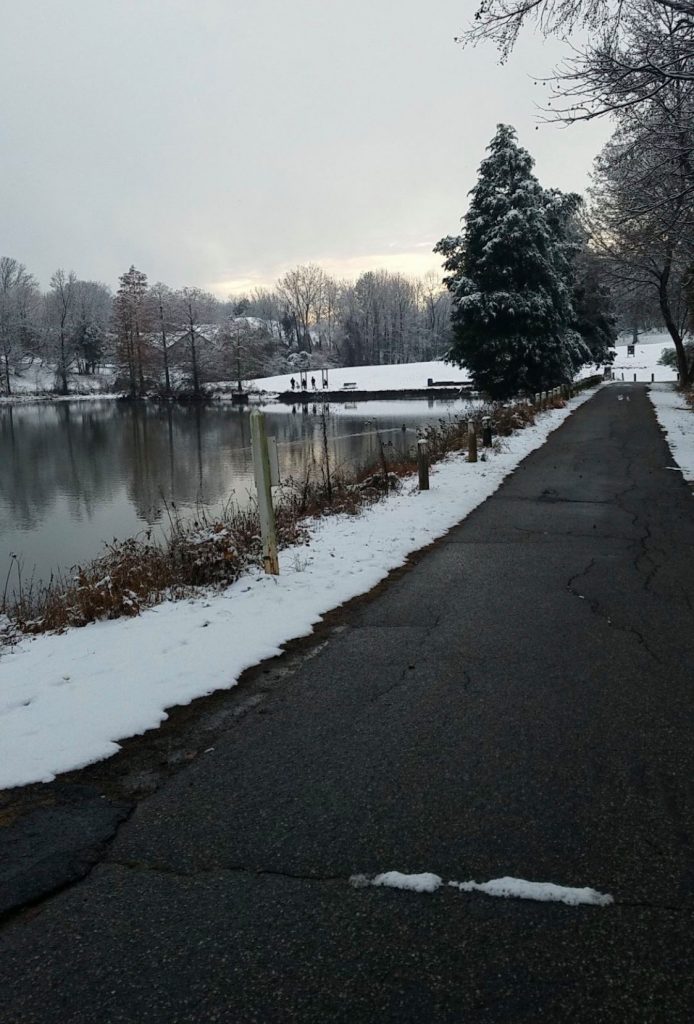
Flowers of The Guilford College Woods
One thing I was glad to have been encouraged to pursue and learn about in the American Nature Writing Class I am writing this blog for is plant identification. Previously, I believed it was a pointless endeavor to try to classify every little organism and sprout because many of them looked so similar, but being able to temporarily become a detective was quite enjoyable, and as I’ve always discovered, whether with those awesome earworms on the radio, or strangely beautiful flowers that naturalists sneer at as invasive species, it is an amazing feeling to be able to name the things you love. So, as the song now goes, these are a few of my fav-o-rite flowers!

The first of these, identifiable not just by sight, but by its heavenly aroma as the breeze blows gustily on an April afternoon, is Wisteria, the genus name for purple flowering plants. One interesting fact is that wisterias are in the legume family (where garbanzo beans and lentils also come from), and another interesting, and protective fact, is that all parts of the Wisteria plant are poisonous, containing an ingredient called saponin that can lead to dizziness, confusion, vomiting, speech problems, and eventually, collapse. In addition, it is fatal to children and pets, so if you have either, let them admire this beauty from afar!
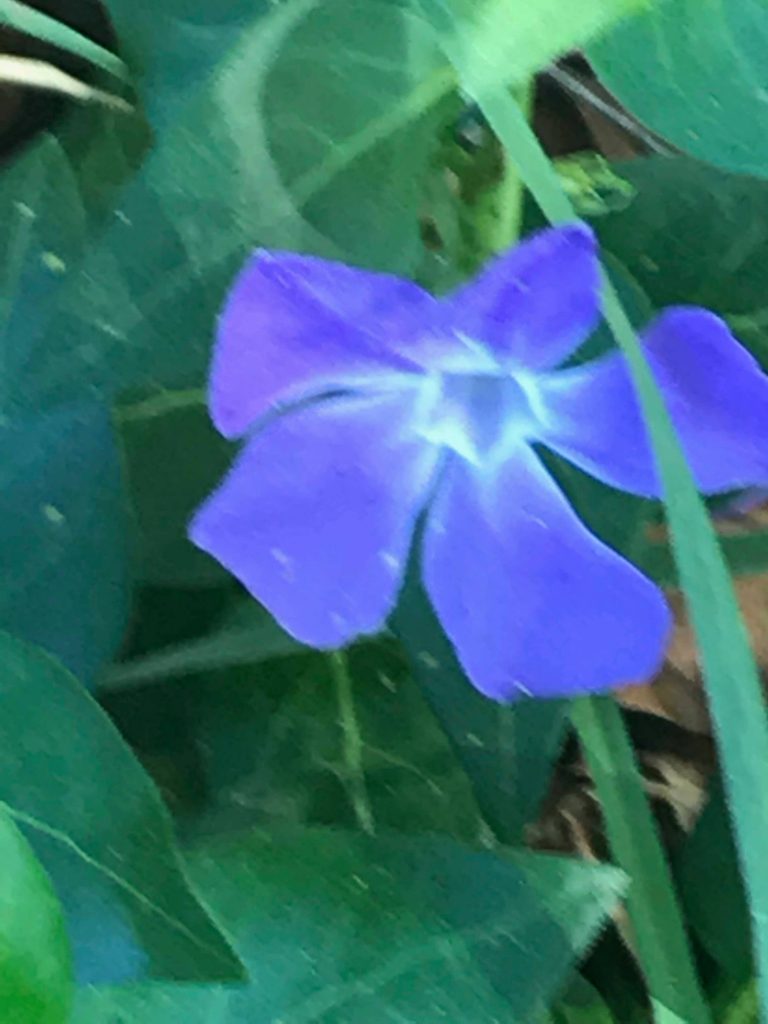
The next plant I saw on my journey was the periwinkle, species name Vinca Minor. It is also known as dwarf periwinkle, or in the United States, myrtle or creeping myrtle. It stays close to the ground, occasionally going up to 40 centimeters, but no higher than that. It is a highly medicinal plant, which contains more than 30 alkaloids.
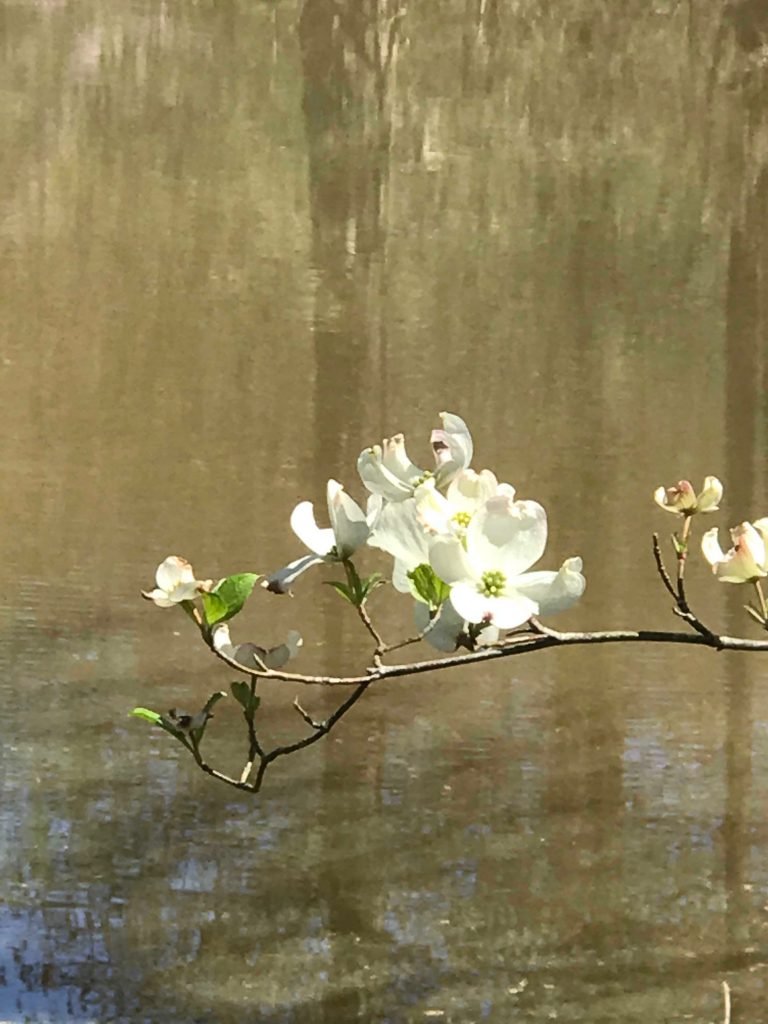
The flowering dogwood tree is located near the lake, a small deciduous tree that is native to both North America and Northern Mexico, and used in the production of inks, dyes, and quinine (used for medicine). In 1941, it was named the official state flower of North Carolina.
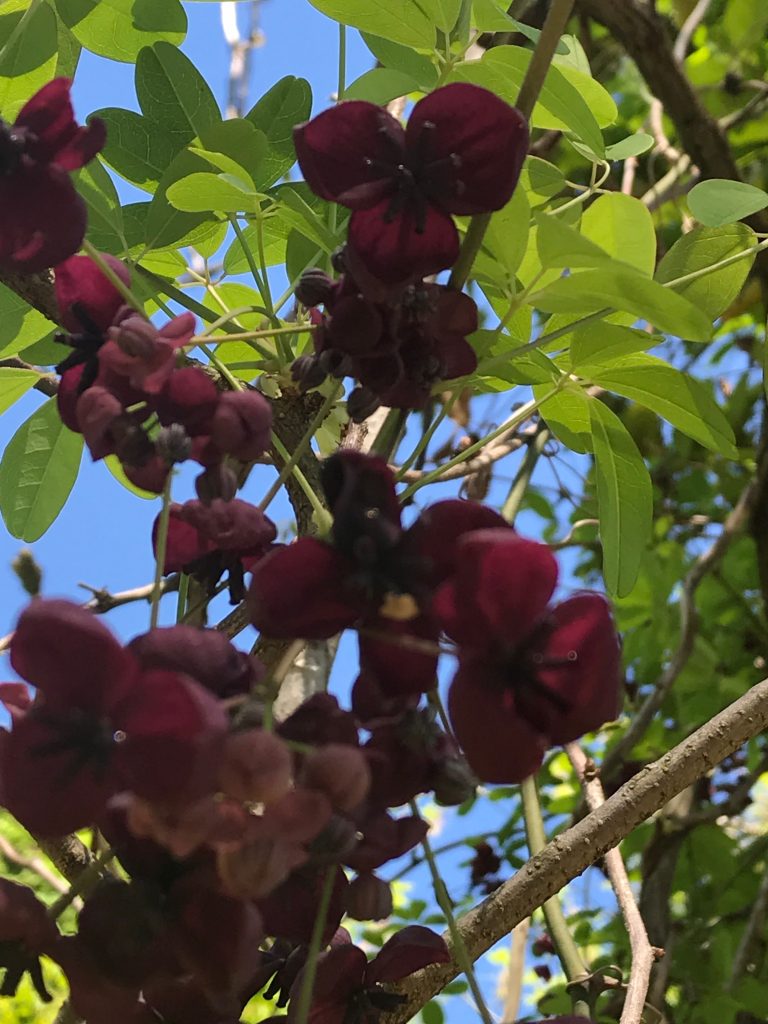
This was by far my favorite flower, even though it took me a while to identify it! The dark, yet tender blush of the petals is such a great contrast to the light green and the blue sky, making it a true spectrum of primary colors. This is not a single species; rather, it is a hybrid magnolia also known as the saucer magnolia, a deciduous tree with flowers that bloom early, centralized primarily in the East and West coast. This variety, Jurmag1, has the darkest and tightest flowers, which are a sight to behold.
Human Presence in The Guilford Woods
Whenever we go into a natural area that is well loved, any area for that matter, we tend to take each stride more affirmatively than the last, we glance around, not just with a sense of exploration, but with pride. Pride that we get to experience this place? Maybe. But the idea of dominion over land alters how we conceive land use, what we believe about our rights and responsibilities to the land, and even what we leave behind. On April 9th, I walked in the woods, by myself. Previous pictures that I’ve taken in the woods have always been when I was in the company of others. I’ve always been navigation-challenged; last year, when Guilford College’s literary magazine group, The Greenleaf Review, held a writing retreat, I went, had a fantastic time, and got lost in the woods the last day of our retreat after breakfast, because I wanted to go walking. Before we have conceptions of how we use the woods, we also have conceptions about WHO can use the woods. We had the opportunity to read a book by a renowned ornithologist, Drew Lanham, called The Home Place: Memoirs of a Colored Man’s Love Affair With Nature. As a Black ornithologist, he feels very much like an outsider in nature, given that fewer than 10 birders are Black, and the profile of a naturalist is one of White, middle aged males. While my struggle isn’t quite so tremulous, I wanted to give myself the confidence that I would be able to go into the forest and successfully come out without having to take anyone with me, or ask for help. So I set off.

Then there was a series of storm drains. I found quite a lot of these overlaid throughout the trail, and probably would have found more had I walked further. In total, I found 6 drains. Some appeared to have been touched sparingly since they were first installed, but one was heavily decorated with Guilford-inspired graffiti that surprisingly mirrored the colors that were used on the second graffiti installation I saw, though that was nearer to the lake.
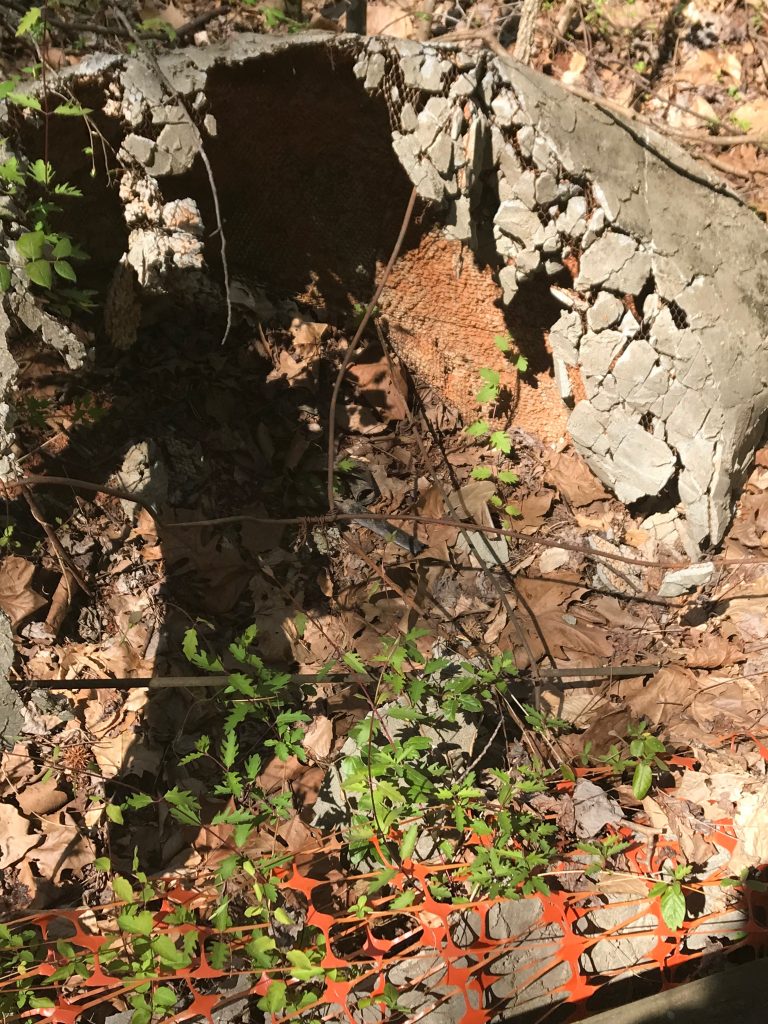
The third category of man-made objects were bridges. While it may seem pointless to categorize given that so much of the structure of the woods and the trails has been man-made, a lot of these structures differentiate the Guilford Woods from a natural overgrowth of “woods.” The left and center photos were found in the forest, and as you’d expect, they are far more decrepit than the bridge near the lake, outside the Woods, especially the bridge in the center which was missing a rung. I imagine it must serve as a cool, dark hiding place for various insects like termites, or animals like raccoons.
I believe man-made influences not only change our ideas of the forest, but also influence what we do in the future to it.
Lackin’ Quackin’: Observing the Muscovy Duck in the Guilford College Woods
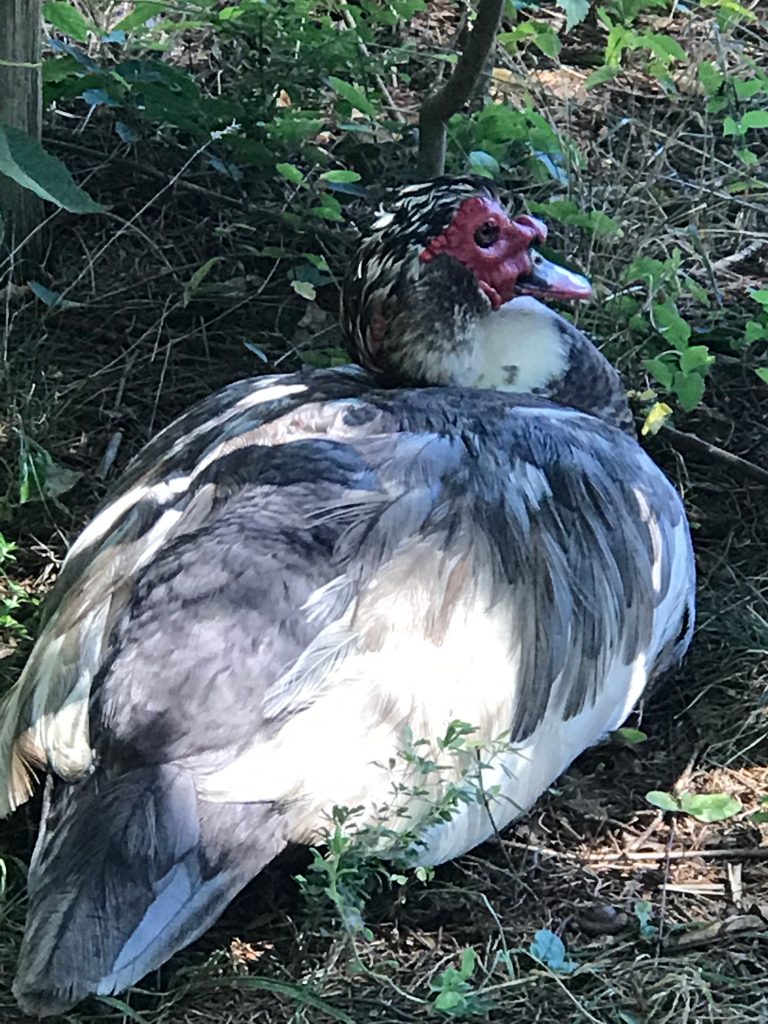
Nesting Muscovy Duck Hen 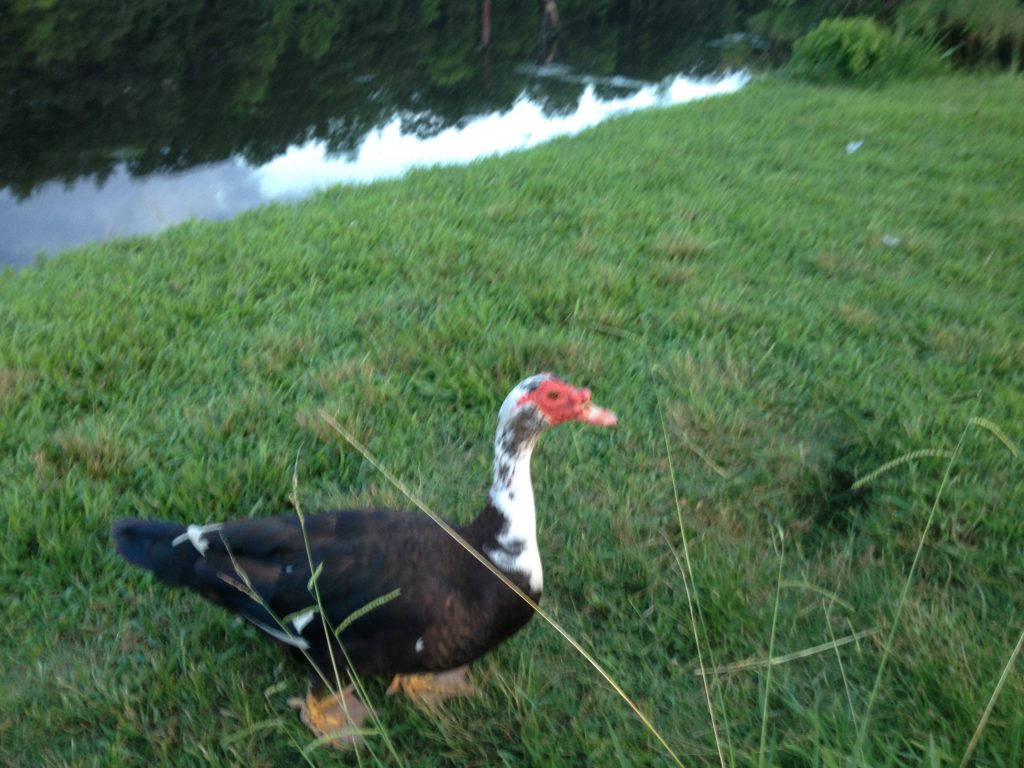
The Muscovy Duck – Cairina Moschata 
Your intrepid author Ramya covered in colors, along with a super chill Muscovy Duck, enjoying the splendor and joy of Holi and Guilford College’s Serendipity Festival.
When I began chronicling my stories alongside the Canada Geese of Guilford College, I was astonished by how much I could remember of my experiences with them. What was supposed to be a single post detailing minutiae of waterfowl became a meander into memory lane, with experiential data of what it’s like to actually interact with Canada Geese, intimidating, but gorgeous birds. This post, in saving my favorite for last, will detail my experiences with the exuberantly curious and mostly friendly Muscovy Ducks! The Muscovy Duck, known as Cairina Moschata. The genus name, Cairina, originated from the mistaken belief that the birds were from Egypt (these birds are actually native to Mexico, Central and South America) and it means “the musky one from Cairo.” While “Muscovy” is also the old name for the area surrounding Moscow, it is really referring to the musky smell these birds possess, which Carl Linnaeus noted in 1746. They can be easily identified by their pimply, or as Linnaeus noted, “carunculated” faces, and by their speedy movements (their ducklings are mobile from birth). At Guilford, they often approach humans in pairs, and there seems to be a general consensus that there is a recognized duck couple (most likely, multiple) on campus. While their primary diet is grass, and judging by the tails in the air, small fishes and insects under water, my experiences have shown that they find college students the most delightful resource for nourishment of all!
During my first year, we had the Guilford games on the lawn near the lake, where residents of Milner and Binford – the two first-year dorms – competed in a series of agility and endurance based events. My new friend, Shania, a resident of Binford, and I went together, and after tiring of our lack of athletic prowess, we decided to sit by the Guilford College lake on the bench, eat the chocolate we had collected throughout the day, and just talk. The crinkle of unwrapping the chocolates was enough to summon two Muscovy Ducks, who seemed to have a twinkle in their eyes. We could hear the characteristic low breathy call of the drake, the male duck, as it came toward us with its companion (interestingly, Muscovy Ducks don’t really quack, hence the title of this post). We looked at each other; she was the girl who had been surrounded by mountains all her life, and I never ventured into the yard in fear of mosquitoes. Whatever our prior experiences with nature had been, we could not deny that it was now excitedly running to us demanding we surrender not only the chocolate, but also our preconceptions of the supposed divisions between humans and the natural world, which had no doubt been navigated by slaves, Quakers, and especially the Saura and Keyawee tribes before us. We bunched ourselves on the bench as we frantically tried to come up with an escape plan.
“We can’t give them the chocolate, can we?”
“No, of course not! Run!”
We veered off to the left, preemptively trying to escape their waddling legs, but when we turned around, the two Muscovy ducks were already waddling off into the sunset together. We watched them for a moment, and breathed a sigh of relief before bursting into peals of laughter. We had gotten through our first duck ambush together.
In my second year at Guilford, snow had blanketed the State of North Carolina in a major weather event referred to as “Snowpocalypse” (an exploration of snow in the woods will be written in a later post). My friends, Natalie, Momo, and I, decided to trek into the woods and observe the seasonal changes. Natalie had been eating a bag of thin Cheetos, while I was eating a puckeringly delicious clementine. As they were wont to do, our feathered friends eagerly approached us for snacks. Before we go any further, I think it is important to state, given that this is a nature blog that could inspire future denizens of the planet, that one should refrain from feeding wild animals. Our food gets processed so much that it’s really not safe for them to consume in high quantities. With that being said, both of us each threw down a single orange slice, and a Cheeto; the results are below. Please keep the video volume at a low level so as to not be deafened by my laugh, enjoy the show.
So basically, to summarize the video, the Muscovy Ducks loved the Cheetos, and even caught it midair. As for the clementine, I’m sure they desperately wanted to give it a chance, because they tried it repeatedly. But every single time they tasted it, they shook their head, as if they were saying, “NOPE. That’s not what we like. But maybe we’ve been too harsh?” And repeat.
I guess the acidity was a big reason they didn’t like it, most of the organisms they eat are probably either mostly neutral or slightly basic, given the algal content in the lake. We were pretty flabbergasted and in awe at the discerning tastes and very human-like actions of the Muscovy Ducks, more on our wintry adventures in a future post.
Canada Goose on the Loose in the Guilford Woods and beyond!
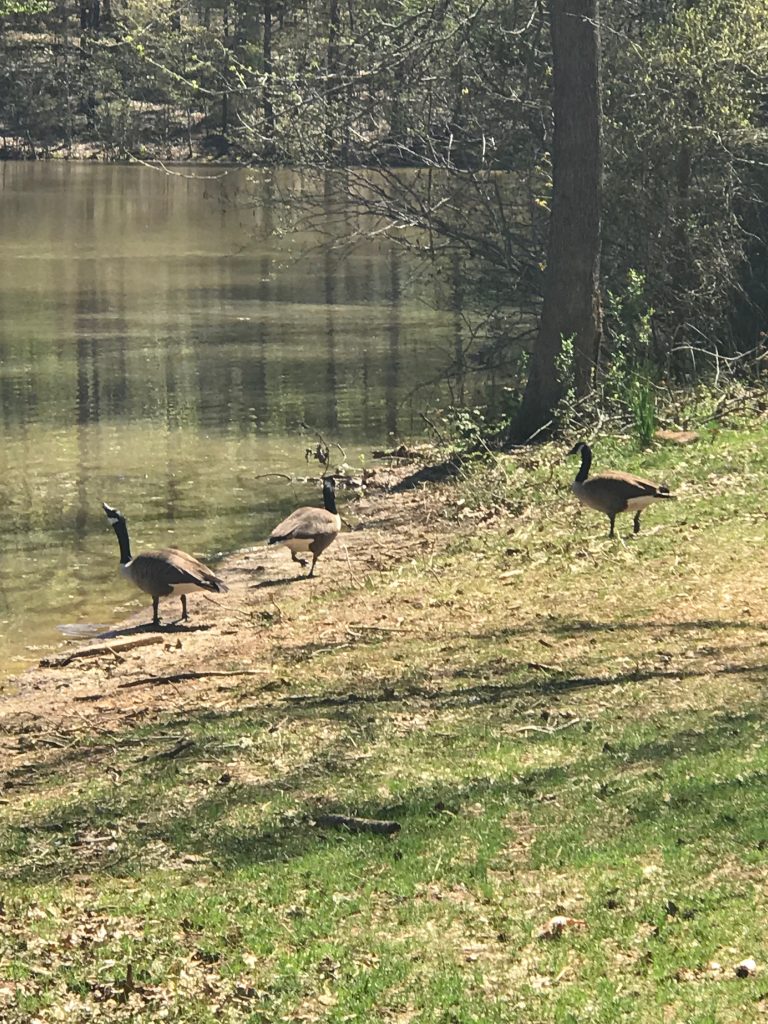
Canadian Geese rejoicing on the banks of the lake 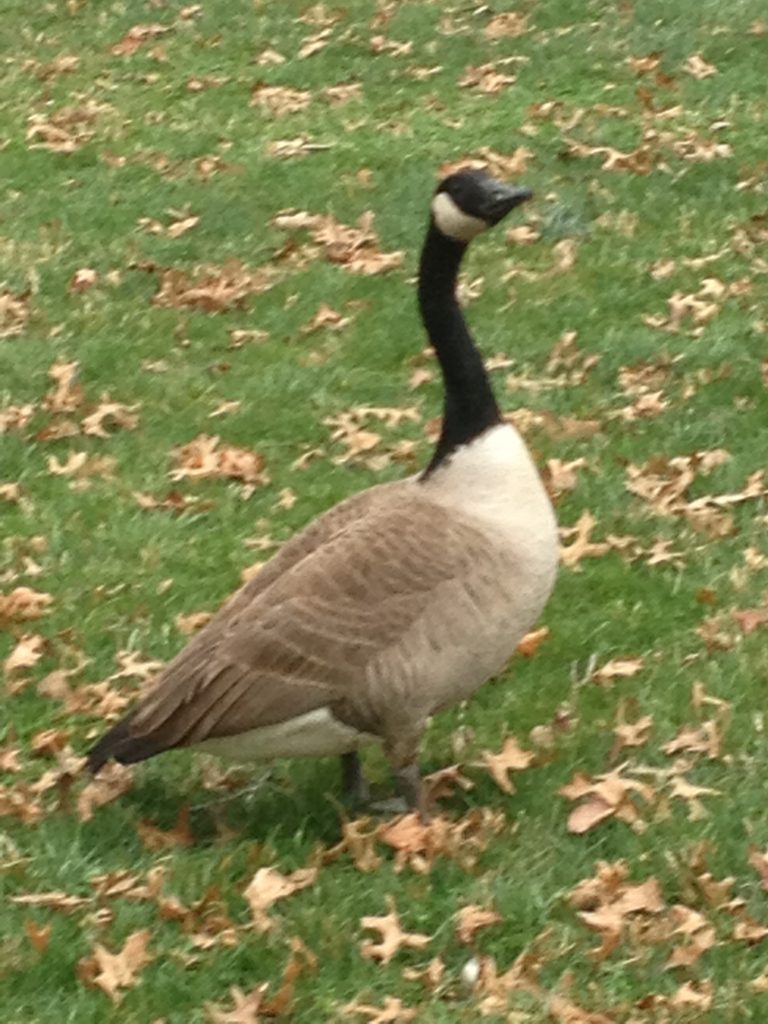
The Canadian Goose – Branta Canadesis
My time at Guilford College has been characterized by communion with diversity, not only among different people, but different animals as well. When your campus is surrounded by trees and 153 acres of woods on the property, as well as a lake encompassing over 7 acres, it is impossible to avoid our animal roommates, especially our feathered waterfowl friends. But before I regale my interactions with these surprisingly forthcoming, curious, and often, somewhat intimidating birds, I suppose I must introduce them! First, we have the eponymous Canada Goose, Latin name Branta Canadensis,with a long black neck and beak, brown feathered body, and white cheeks. It is a migratory bird, a type of mostly-herbivorous large wild goose common in temperate regions like North Carolina, and particularly found on or near bodies of water, such as the Guilford College Lake. At Guilford, the Canada Geese can be mostly seen eating blades of grass, as well as picking at the ground for other small insects. It is quite adept at living among humans, even though its scattered defecation tendencies and territorial aggression incites ire among weary college students trying to get to class, shoes and ego unscathed. Despite this, I can confidently say that my experiences at Guilford would have been less exciting, were it not for the divergence of Canada Geese from the stereotyped politeness of the people in their country of origin, Canada. During my freshman year, I had to take a First Year Seminar and a First Year Experience class, both of which are required of students in order to introduce them to college coursework and college life, respectively. Looking back, I feel I could have applied for an independent study too, given what the Canada Geese taught me about foot traffic, the right of way, and what it means to maintain decorum under pressure.
My classes were held in King Hall, the building right next to the library in front of a large long. The brick path winding over there from Founders took far too long to traverse, especially since I got into the habit of running to class at the last minute. I decided to cut across the grass in order to take a straight shortcut, as there seemed to be no prohibitions against doing so. Or so I thought. I was about to learn that, in addition to Public Safety and Campus Life, to the top of the list of individuals who could kick butt and take names was the Canada Geese. I thought they were birds, but they later revealed themselves to be stocky feathered bouncers with a taste for autocracy as they forced me onto the path with menacing hisses. I would know that noise from anywhere; when I traveled to Vancouver, Canada in middle school, I had the opportunity to witness a gander, goose, and their 4 recently hatched eggs, under a wiry tree in the winter. My mom and I, perilously, stepped a little closer as she reassured me that those hissing sounds were perfectly benign. Alas, we were not invited to the baby shower, and we were rudely shown out with a thunderous beating of wings. Five years later, there I was, having a standoff with a couple Canada Geese that were determined to try to make me late to class, or more succinctly, just turn tail and run. As students passed by me on the path with expressions that were probably a mix of derision and resigned sympathy, I was determined to stand my ground. Even though I realized the futility, I explained to the geese that I, a lowly student, had to show up on time for my first class at least. Their sentiments were unmoved. Finally, I edged around them, only to be greeted by a chorus of hisses, and suddenly from a few feet away, a goose or gander beating their wings. I prayed I wouldn’t slip in the mud as I ran for the safety of King Hall. Future excursions would involve me saying please and excuse me, and even though I would be remiss to assume that geese understand American expressions of politeness, I think we managed to strike a truce because it became easier to take that shortcut during my second semester.
But they were no stranger to tests of endurance, as I would soon find out. This past summer, much like the previous summer, I served as an Orientation Leader and Peer Mentor, helping incoming students acclimate to Guilford College, and facilitating fun activities for them to enjoy. Orientation is always a blast of energy, teamwork, and Guilford pride, but on the last day of every Orientation, we have a very special ceremony called the Passing of the Light. This tradition was borne from Quaker teachings that every individual has inner light of God, or even just what makes them unique, and this is what we celebrate during these ceremonies as we welcome students to the Guilford College community. In order to do this, orientation leaders light the candles of the first-years, who, in turn, light each other’s candles, and everyone is led in song and reflective contemplation. Following this, each student deposits their candle into the communal bonfire pit in front of the lake. On this particular balmy night, the Canada Geese wandered over to see what the commotion was, and somehow, deduced that our attempts to shoo them away was really just us trying to selfishly keep a tasty snack of flaming wax and paper candle holders to ourselves. One of them bit at the flames, and pulled back, but in the process, his wing got singed, for which we all winced in sympathy. I know I was pretty scared when the Canada Geese started trying to get me off the paths, but it is worth remembering that they are often far more hurt by our presence than we are by theirs. This is why we should try to make up for it by doing more conservation research, as Guilford’s biology lab is doing by utilizing tracking collars to analyze migratory and survival patterns.
Perimeter Floors of the Guilford Woods

Daffodil spots 
Mixture of Bermuda/Fescue grasses, buttercups and speedwell.
In our quests to traverse wooded areas, our focus is often on the giant oaks, birches, and other plants and trees that seem to look down upon us, as well as the greenery we may glimpse at eye level, without paying much thought to the surfaces we walk on. This post will describe the mats of greenery one would walk on around the woods (en route to the lake) and in the surrounding hills. Finding the particular species of grass was no easy task, though geographic limitations posed a good place to start, due to North Carolina’s diverse experience of all four seasons. There are two varieties of grass species grown in North Carolina, which include cool-season grasses and warm season grasses.
According to the NC State Cooperative Extension, warm-season grasses grow best in the summer, while cool-season grasses tend to grow best in the spring and fall, staying green throughout winter. Guilford’s running trails use Bermuda grass, a warm-season grass that is extremely drought resistant and recovers quickly from wear and traffic. If you’re ever considering what grass to use for a particular area, it’s definitely important to understand the type of land, which region you’re in, and whether the area gets a lot of foot traffic. The grass near the lake, on the other hand is a tall fescue grass, which is a cool-season grass that provides a lawn that stays green year-round (though not uniform, due to the varieties of crab grass present). It tolerates moderate foot traffic, is fairly resistant to drought, and can survive with very little maintenance. Springing out of both grasses include spots of daffodils, the root of which can be used to make tea, and clusters of buttercups. Whenever I see the buttercups, I remember elementary school, when we used to place the tender, bright blooms under our chins to see the tiny glow that would reflect. Small purple flowers like stars, called speedwell, are one among these weeds and are known to spread very quickly, but each flora is more than its label as a “weed.”
Other than considering the minutiae of grass species, it is simply mesmerizing to behold how organisms and micro-organisms utilize it in the constant food chain. Both muscovy ducks and geese, which will be described in a later post, consume the grass as a secondary source of food, and their excretions fertilize the soil, which in turn grows more grass. The ground on the banks of the lake, beside the swings, no longer have grass or dark soil; rather, it has been covered by sand, possibly due to the erosion of said soil. However, in a stark contrast to the dirt and grass that cover the actual areas of the forest and lake area, the pathway from the beginning of George Fox Road to the Counseling Center, Pines, and the Dean’s House, along with the subdivision on the other side is entirely made of gravel, which is beneficial when it rains because it doesn’t become as slushy as the areas with dirt and grass.
Instead, giant puddles, dodged by runners and dog-walkers alike, encompass large portions of the path during those times. Some drivers on the path, like my mother, are rendered irate by the cacophony created by the pieces of gravel hitting the car, other walkers are found shaking stones out of their shoes, but that well worn path is sought continuously regardless, by Pines residents returning from a long day of class, weary students seeking solace from the Counseling Center, and the Provost, Frank Boyd, as he returns back from a long day of work. Meanwhile, the grass folds and crinkles as ducks, geese, and various organisms alike trudge across, through rain and shine.
Enjoying the Forest at the feet of Mama Tree
July 2016, the summer before I started my journey at Guilford College, feels like a millennium away and yet, the place where we are is capable of grounding us in memories that seem distant, as if they only happened yesterday. It is a wondrous feeling to visit a space that you are yet to inhabit, I felt a strange dichotomy between imagining myself as a living, breathing piece of all these different locales that make a campus come alive, and also felt strangely out of sync in a space that has seen centuries of experience in historical, academic, and spiritual life, of which I was now a part.
My parents and I, as we tried to conceive of my life at Guilford, traversed from one end of the campus to the other, and finally, we drove down to the tree lovingly referred to as, “Mama Tree.”This was our first experience of the Guilford College Woods, also known as the New Garden Woods, located in Greensboro, North Carolina, in the United States of America. This tulip poplar behemoth had been a beacon of light for many African American slaves traveling the Underground Railroad, a network of safe houses intended to guide them to freedom. This particular spot was established on the railroad by Levi Coffin, a native of Guilford County, North Carolina, and other fellow Quakers, who were staunch abolitionists, stemming from their religious beliefs that every person had the light of God in them. James Shields, the Director of Community Learning at Guilford College, described how one group of slaves had White slave catchers hot on their trail, but when they hid behind the tree, they could no longer be seen. Levi Coffin would even venture into the woods, with the purported excuse of feeding pigs, and provide fleeing slaves with food and supplies.
But the Tulip Poplar wasn’t the only tree to bear witness to this fight for freedom. 150 years ago, the forest was covered with thickets of pine trees, now replaced by elm and oak trees. The trees aren’t alone in this forest either, as white-tailed deer, groundhogs, and squirrels frequent this trail more than tour groups do. As we snapped pictures and reveled in the wonder of majesty and tranquility, we glimpsed a familiar friend, a bright red cardinal, specifically, a northern cardinal (for the avid avian adorers out there, simply saying that we saw a cardinal might be confusing, as there are many different types). This type of cardinal is what North Carolinians, like myself know as our state bird. It landed on a branch far above us, and I whistled at it. Surprisingly, it whistled back, and we went back and forth until my parents wanted to go. Much to my amazement, I managed to commune with an unofficial member of the Guilford College campus a month before my arrival on campus. I like to think of that bird as my first friend, but more importantly, looking back has given me the opportunity to understand what exactly I saw around me and immerse myself in it once more.
